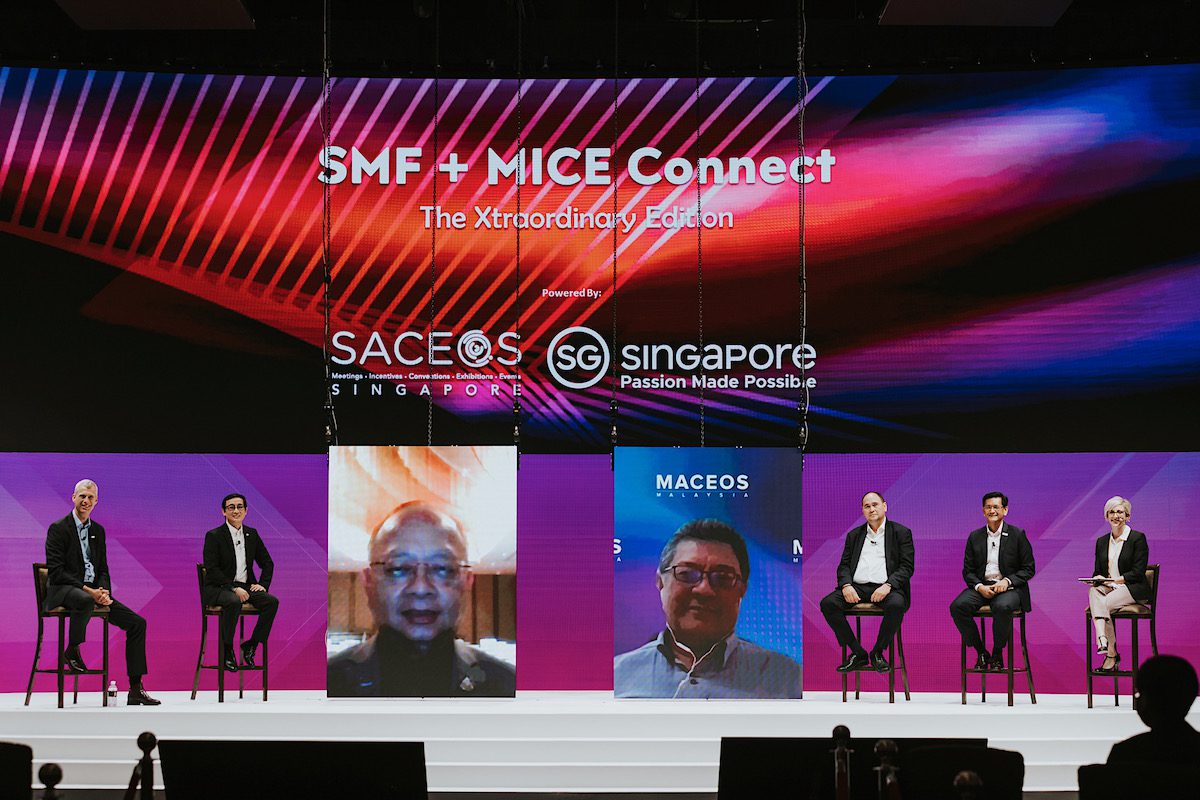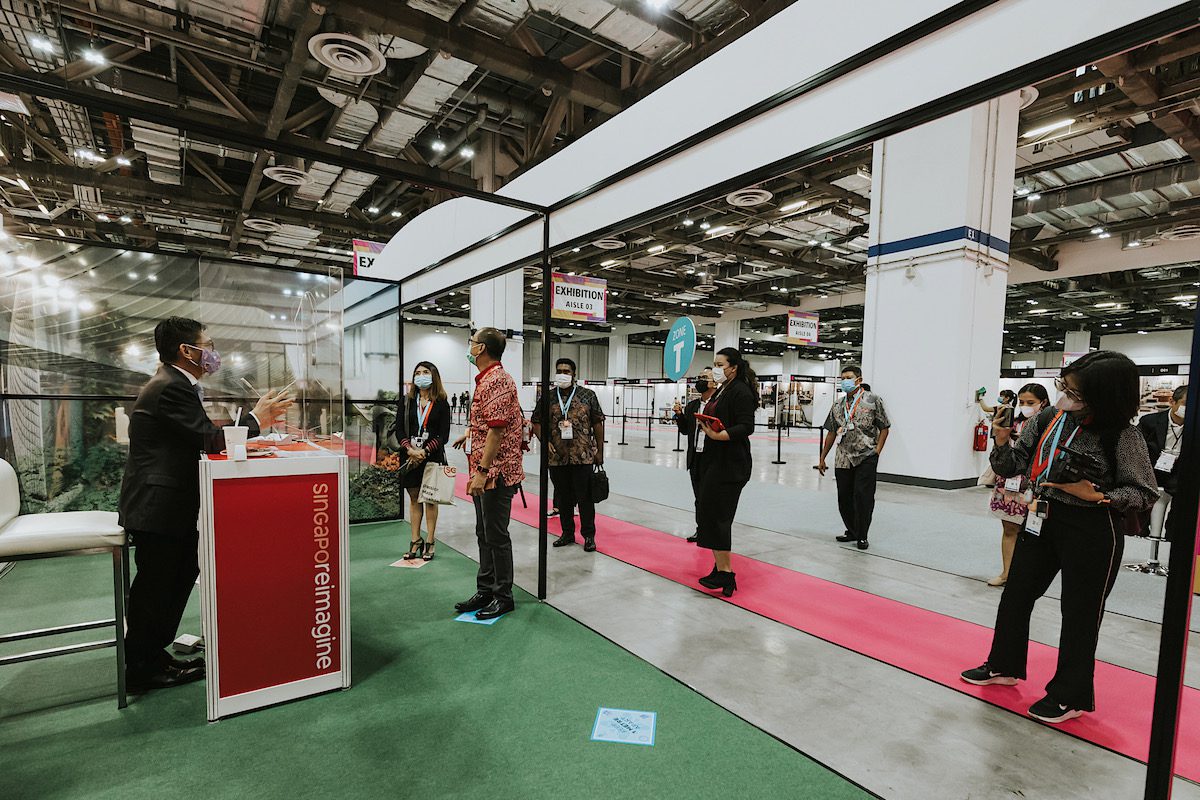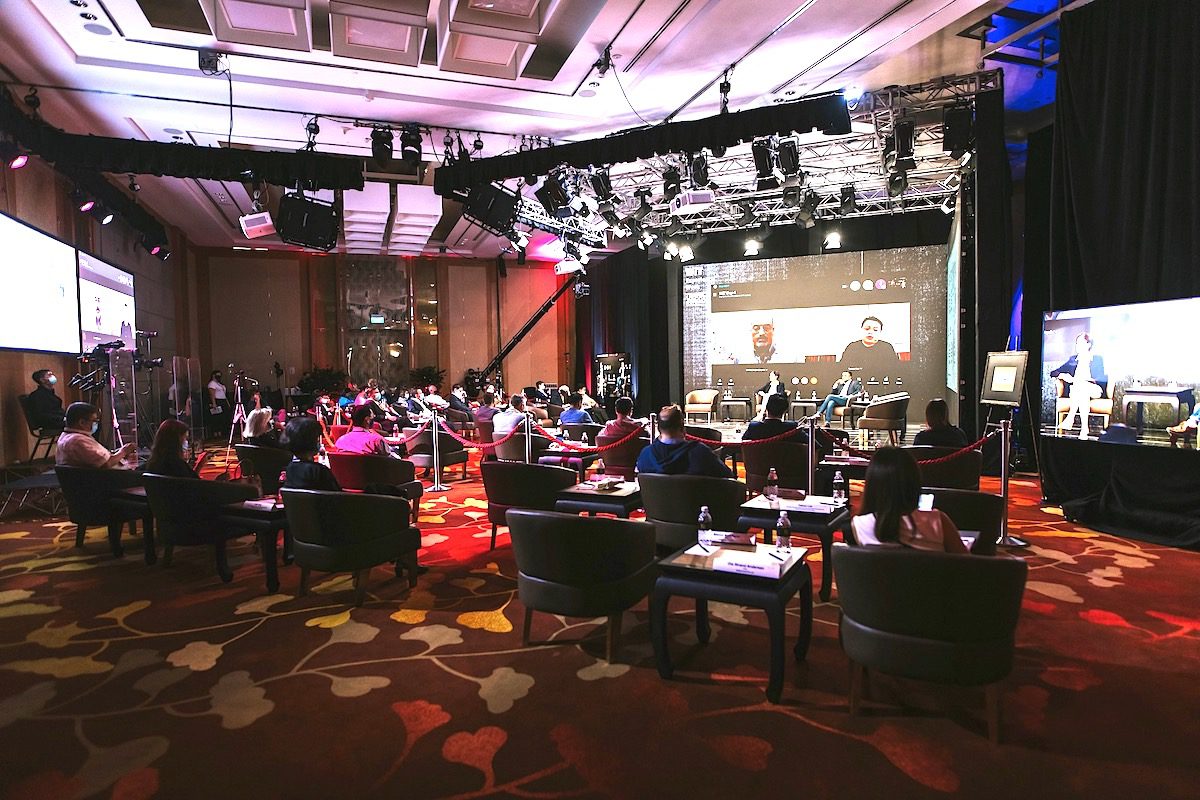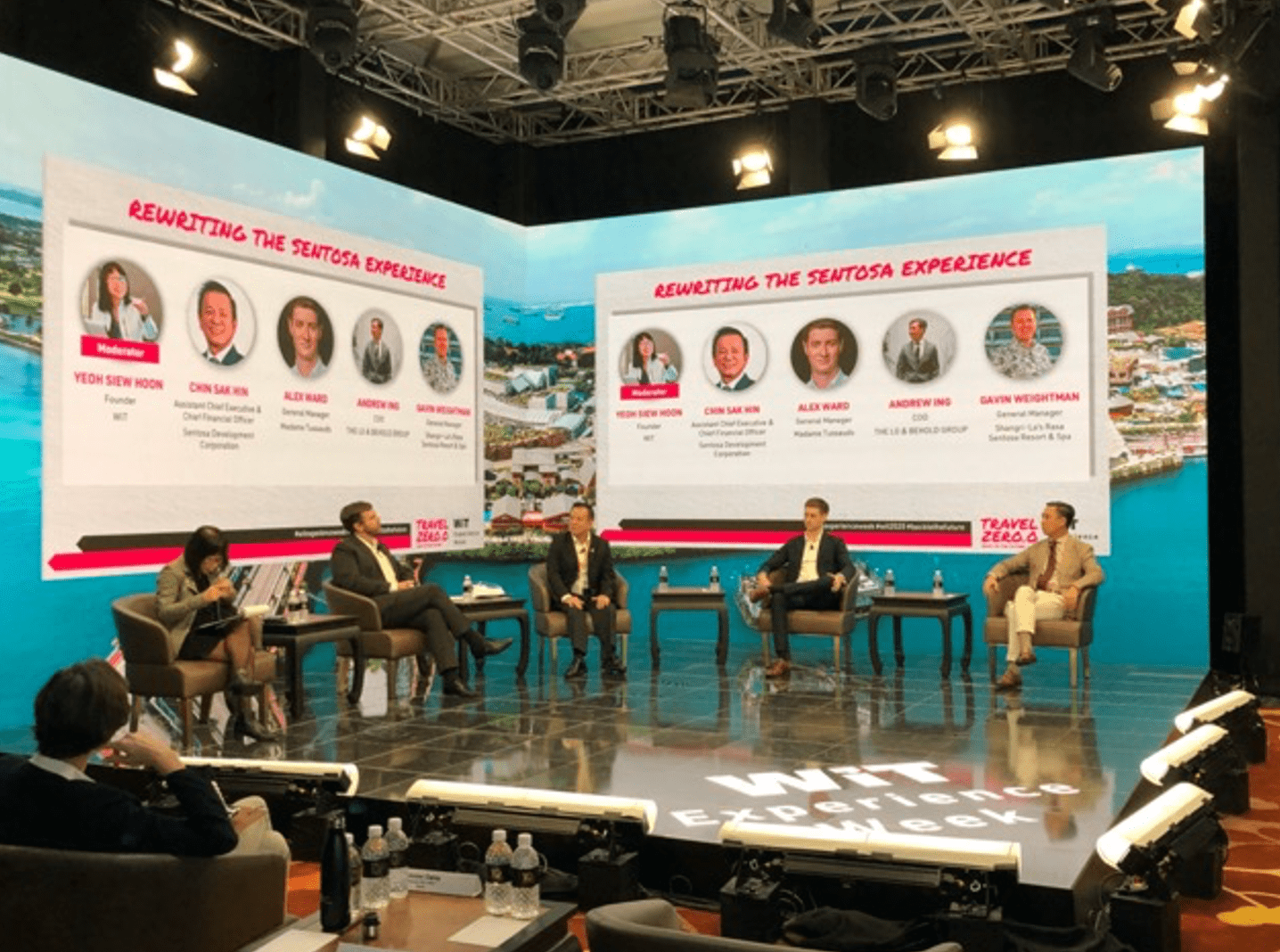Skift Take
Government support for hybrid events as well as actionable roadmaps and safety measures has seen Singapore blaze new trails for the Meetings, Incentives, Conventions, Exhibitions industry in the new normal.
This sponsored content was created in collaboration with a Skift partner.
The Covid-19 pandemic has sparked new challenges for the Meeting, Incentives, Conventions and Exhibitions (MICE) industry. Closed borders and country-wide lockdowns have made international travel less seamless. And restrictions on large public gatherings have created barriers for industries who rely on in-person events to share knowledge and build networks.
But this moment has also seen countries protect the health of visitors and carefully consider the needs of delegates. It’s also given rise to innovative hybrid formats that combine the intimacy of the physical with the convenience of the digital. Singapore is a case in point.
This year has inspired an onslaught of virtual events. But duplicating a physical event digitally can be counterintuitive.
Singapore has anticipated the ways that hybridization–events that blend both digital and in-person touchpoints to maximize accessibility, convenience and connection–will reshape the MICE industry.
Importantly, the country has introduced the Event Industry Resilience Roadmap (IRR) to give organizations a blueprint for putting this into action. IRR, a joint initiative from the Singapore Tourism Board (STB), Singapore Association of Convention & Exhibition Organizers & Suppliers (SACEOS) and Enterprise Singapore (ESG) empowers the MICE industry to define a forward path in the areas of SafeEvent Standards, agile business models, and new skills and competencies.
“The hybridization of events is likely to take off in a significant way and the pace and scope of these changes can be daunting,” said Andrew Phua, Executive Director, Exhibitions & Conferences at STB. “STB has supported the Singapore Association of Convention and Exhibition Organisers and Suppliers on the development for IRR to guide the industry on how to leverage technology to deliver events safety and profitably in a post-Covid-19 environment.”
The IRR also incorporates Safe Management Measures such as a new SG SafeEvent Standard that makes it simple for organizers, venues and suppliers to adhere to hygiene and sanitation, safe distancing, emergency management and contact tracing.
In February, the country introduced the SG Clean campaign to galvanize members of the public to adopt good personal hygiene and raise public standards of cleanliness – making the community accountable for keeping each other safe.
Aloysius Arlando, President at SACEOS is encouraged by the fact that Singapore has already hosted pilot events safely and successfully. He says that the country is future-proofing its MICE sector thanks to its investment in technology support and safe management measures.
“We are seeing a growing number of really impressive, forward-looking organisations who are doing digital story-telling for a digital audience in a digital age and are making money off it,” he said.
HYBRID EVENTS ARE THE WAY OF THE FUTURE
Thriving in a post-Covid world calls for a willingness to embrace some practical learnings. Arlando believes that cultivating community should be an essential priority for organizers. It will also give rise to opportunities for monetization in the Covid-19 era and beyond.
“The MICE industry will see a rapid adoption of technology that will enable community building and allow diverse connections, exchange and co-creation of content, online and offline,” he said.
In the post-pandemic era, the MICE industry can no longer afford to regard relationships as transactional. Instead, Arlando says that attendees will demand a personalized experience and expect content to be delivered in compelling forms.
“Events will find themselves using frontier technologies such as artificial intelligence, augmented reality and virtual reality to further contribute an engaging and personalized experience for customers,” he said.
For instance, in September 2020, the AsiaPacific MedTech Forum, one of the world’s biggest gatherings of medtech professionals, embraced a virtual format. For the first time, the event, which revolved around the theme ‘Redefining Healthcare Agility’ saw 130 healthcare leaders from 34 countries share insights on topics such as digital health and public policy. Delegates could access live interviews, demonstrations and masterclasses – or access the content online at a time that was convenient.
Meanwhile, Web in Travel (WiT) Singapore, a conference for the travel technology, distribution and marketing industries, saw the first three days of WiT Experience Week 2020 unfold digitally. On the last day, the event moved to a state-of-the-art ‘Hybrid Broadcast Studio’ at Marina Bay Sands. This physical component saw 40 attendees gather in-person to connect with each other and experience both physical and virtual presentations.
“One of the biggest challenges of virtual events is for the customer to feel they are part of a conference experience still and not just attending a series of webinars stitched together,” said Yeoh Siew Hoon, WiT’s Founder and Editor. “We wanted the customer, from day one to day four, to feel connected to the singular theme from beginning to end much like watching a television series.”
Hoon says that, during hybrid events, it’s critical that organizers think of virtual and digital audiences as one – a focus that enables smoother storytelling across touchpoints. This also ensures that engagement levels stay high.
“You have to keep thinking of how to connect the virtual audience and the physical audience into one experience,” she said. “There are many tools within the tech platform–polls, Q&A, chat–to do this, but you need the human touch […] to bring them together. That you have to learn on the fly.”
HELPING MICE BOUNCE BACK
In September, Singapore announced that it would start considering exhibitions and conferences with up to 250 participants, as part of a plan to revive the MICE sector.
At the same time, it announced that the Alliance for Action on Enabling Safe and Innovative Visitor experiences, an industry-led, government-backed coalition, will prototype ideas for safe tradeshows and exhibitions that aims to help the MICE industry bounce back. These are larger events which would not have been permitted to resume in their pre-COVID-19 format.
Singapore has already taken steps toward hosting large-scale events. One of the first examples was TravelRevive, a two-day trade show, championed by ITB Asia and STB held at Sands Expo & Convention Centre between November 25 and 26. As the first pilot tradeshow, the event attracted close to 1,000 attendees of which about 65 were foreign delegates from 14 countries.

TravelRevive allowed global participants to connect with Singaporean travel businesses in physical and virtual environments.
TravelRevive pioneered the new prototype for safe business events. It included an exhibition, chances for buyer-seller appointments and virtual and physical conference sessions that allowed global participants to connect with Singaporean travel businesses.
Safety, of course was high on the agenda. That’s why it incorporated touchless technology, automated registration kiosks, plexiglass shields for exhibition booths and meeting pods that prevented droplet transmissions.
For Katrina Leung, Managing Director of TravelRevive’s Messe Berlin (Singapore), organizer of ITB Asia, the hybrid format offered a powerful way to build an event that offered the professional evolution that organizations expect – while maintaining distancing measures.

Safety was high on the agenda at TravelRevive with touchless technology and distancing measures in place.
The future of MICE, she says, is about becoming both agile and resilient.
“Plans will change at the last minute – so you need to be able to adapt and pivot quickly and efficiently,” she said. “A good way to put a back-up plan in place is to assess what is within your control and what isn’t. Plan for the elements that are within your control and you’ll be set for success.”
To learn more about how Singapore is hosting successful hybrid events, visit Singapore Tourism Board’s website.
This content was created collaboratively by Singapore Tourism Board and Skift’s branded content studio, SkiftX.
Have a confidential tip for Skift? Get in touch
Tags: covid-19, hybrid events, meetings and events, Singapore Tourism Board, SkiftX Showcase: Meetings and Events, travel recovery


